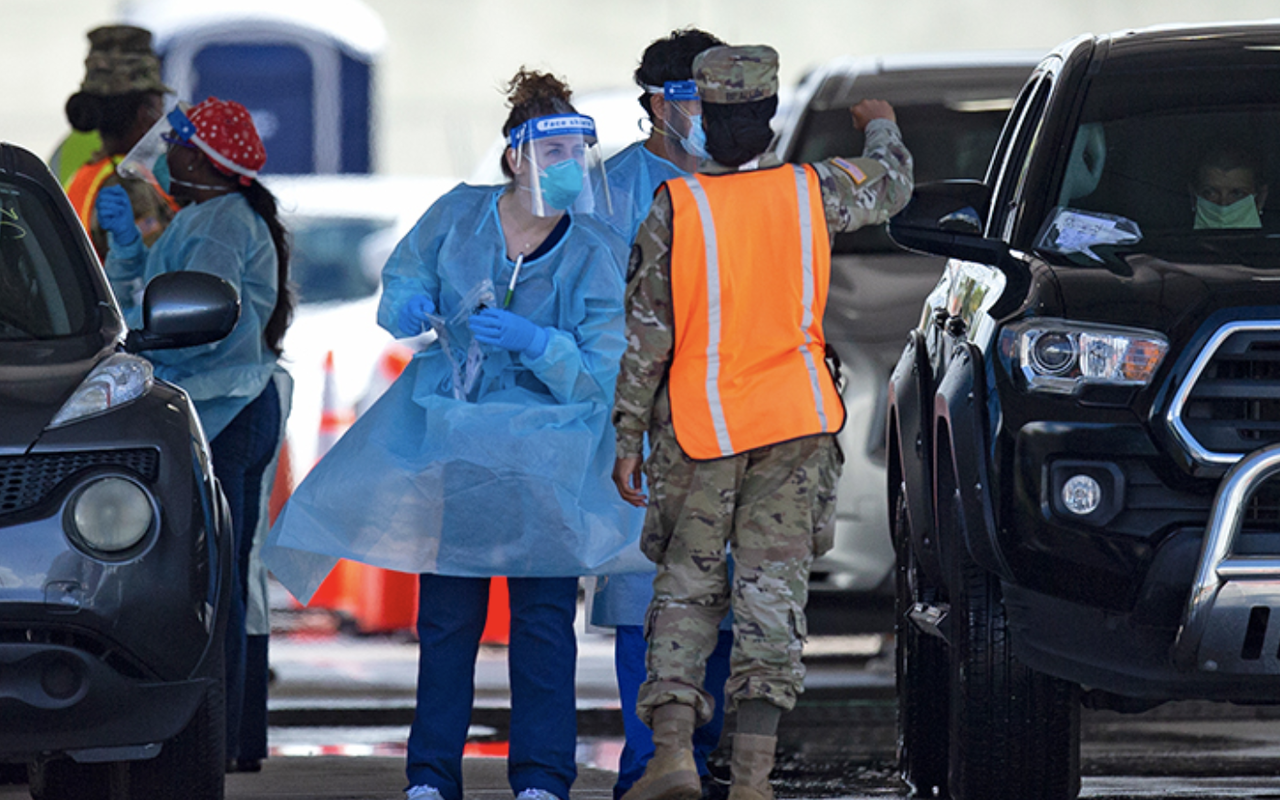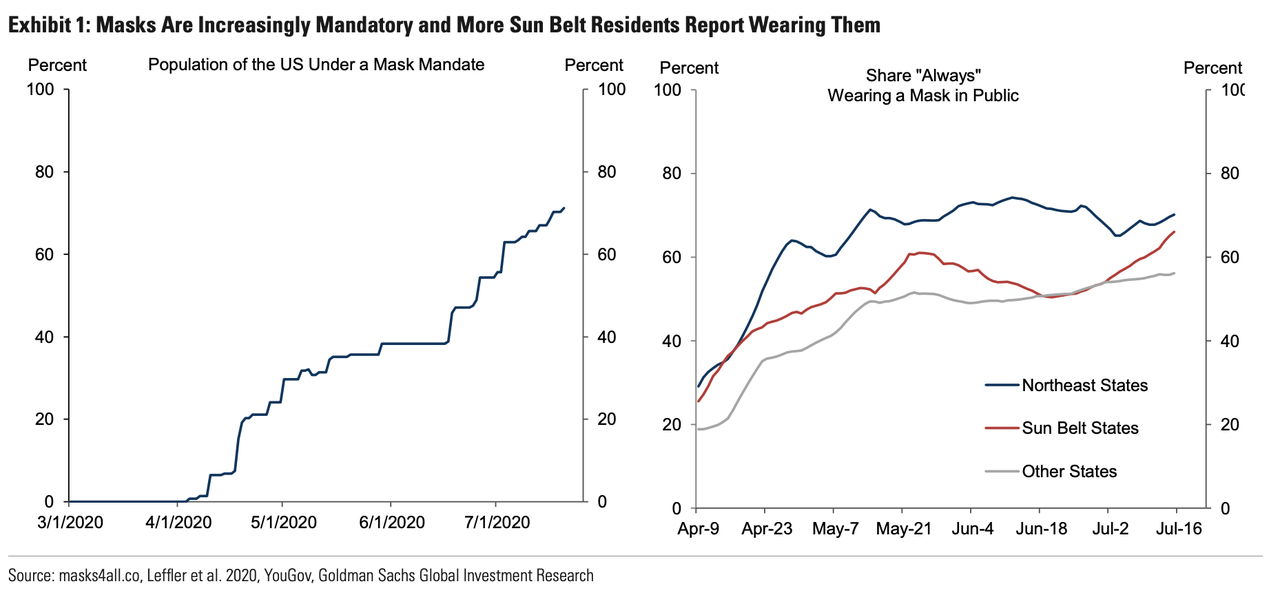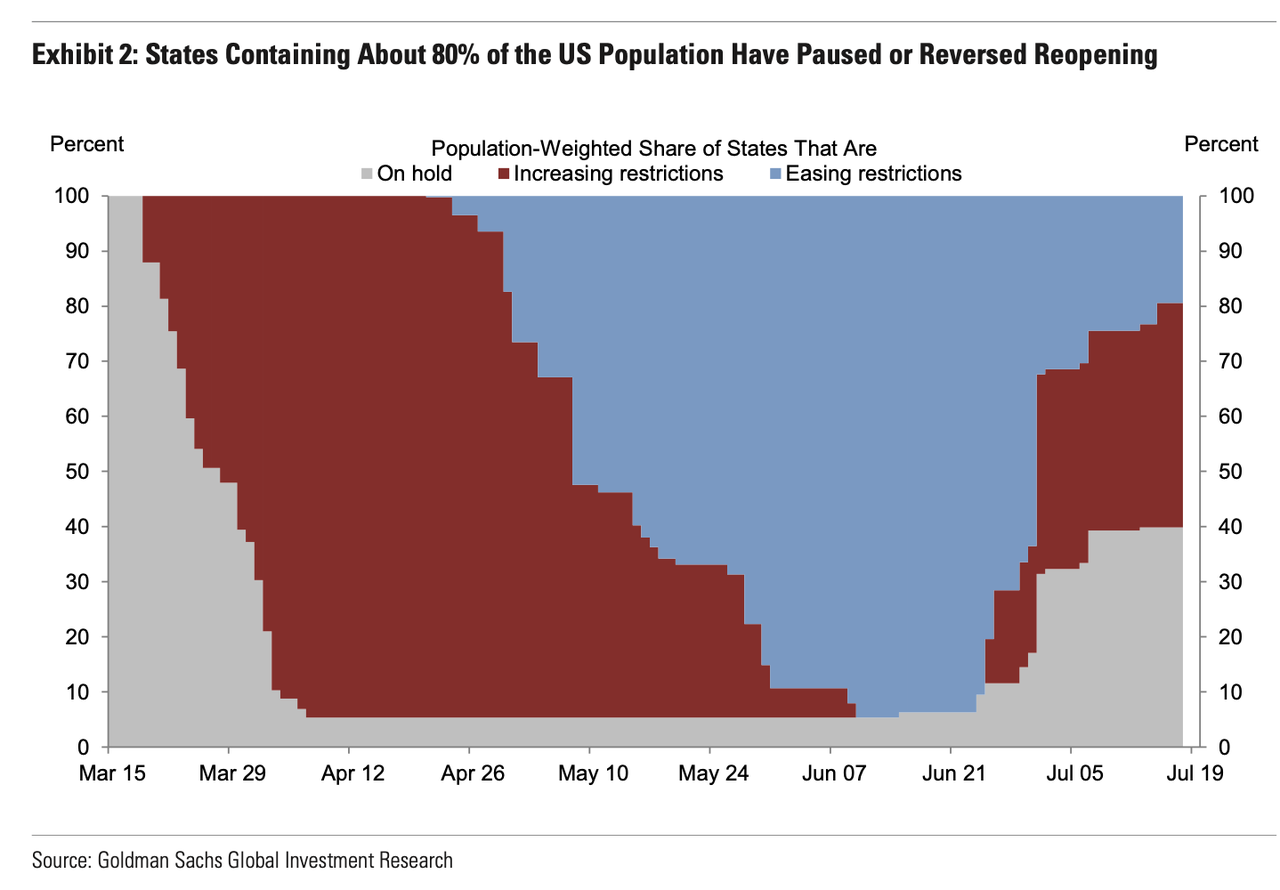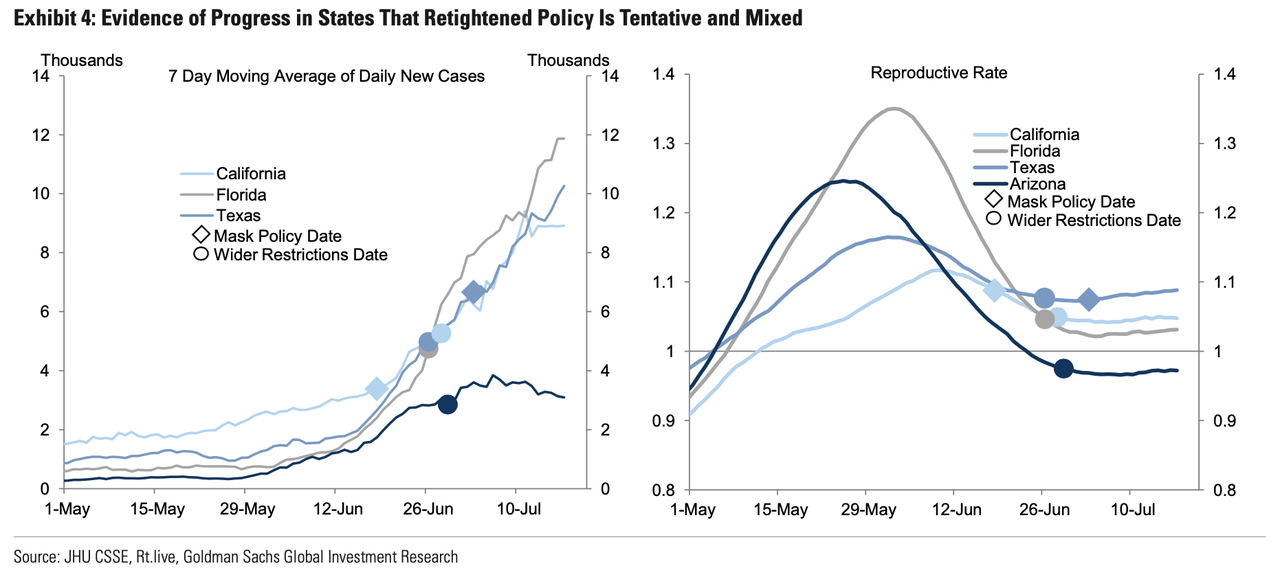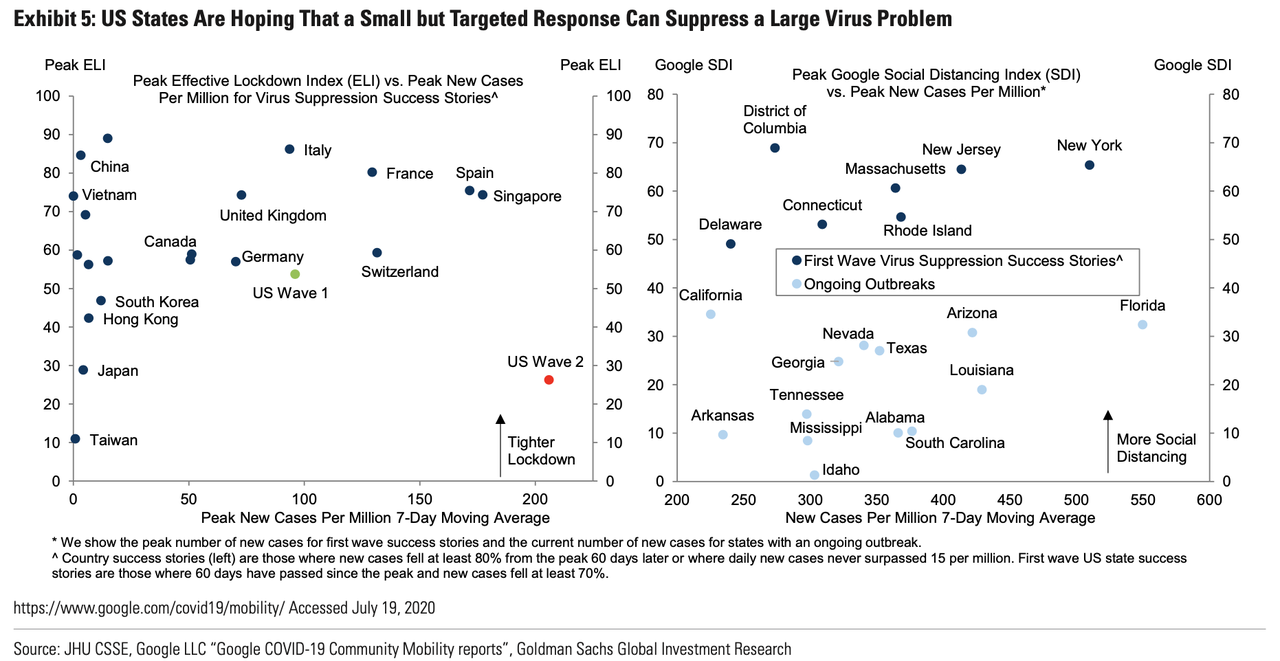Feature your business, services, products, events & news. Submit Website.
Breaking Top Featured Content:
Sun Belt States Choose “Third Path” To Confront COVID-19 Without Destroying Economy

Tyler Durden
Tue, 07/21/2020 – 23:25
In a research note published yesterday, a team of Goldman Sachs analysts spotted an ominous potential inflection point for the struggling US labor market: If the nascent ‘recovery’ achieved over the last 2 months loses steam as states reverse their plans to reopen the economy, it could do lasting harm to the labor market, as many of the jobs that disappear won’t ever return.
Also included in that note is a level-headed assessment of the current situation in the US. As we wait to see if any other states will follow in California’s footsteps by drastically rolling back its reopening plan, Goldman notes that most of the states in the Sun Belt are opting for a “third path” that differs from the established methods that worked in Europe and parts of Asia (mainland China, and, until recently, Hong Kong).
In Europe, the most successful countries opted for strict economy crushing lockdowns While In Asia, countries like Hong Kong, South Korea and Singapore acted swiftly to snuff out the initial wave of the virus.
Here’s Goldman:
“Some of the states that now have major virus problems are taking a third path, using limited measures to confront severe virus spread, with the hope that better-targeted measures can solve the problem at much lower cost. Coming weeks will reveal how well this works. The lower starting growth rate of virus spread means that more incremental measures might be sufficient to stabilize the situation, though they might also take longer to reduce spread to a rate that justifies resuming steps toward reopening.”
The analysts elaborate on that theme in a section of the note entitled “A Targeted Approach To Virus Control”.
* * *
Continued rapid virus spread has made the US a notable outlier among advanced economies. The US is performing poorly on most key measures: new cases have risen to an average of 66,000 per day over the last week, nearly every state is reporting rising prevalence of COVID-19 symptoms, and twelve states are below the CDC-recommended threshold for available hospital capacity. We report these and other data daily in our state-level coronavirus tracker to monitor the risk of further reopening reversals.
State governments see a return to an economically painful full lockdown as only a last resort. The current US strategy to suppress the virus instead emphasizes lower-cost behavioral and policy changes that are targeted to achieve maximum virus reduction at minimum economic cost. So far states have relied on two key policies: mandating mask wearing and restricting high-risk economic activity.
The first pillar of the current US response is increasing the use of face masks, which we recently showed have a large impact on virus spread. Despite some initial reluctance, a growing number of state and local authorities have imposed mask mandates over the last month. We estimate that the share of the US population subject to a mask mandate has risen from 40% to over 70% over the last month, as shown on the left of Exhibit 1. In the Sun Belt, the share of the population who report wearing a mask in public has risen as the outbreak has grown, as shown on the right of Exhibit 1.
The second pillar of the current US response is restricting or shutting down high-risk economic activity. We and other researchers have shown that activities such as indoor dining are highly correlated with virus spread. This suggests that well-targeted restrictions can achieve much of the virus suppression achieved by full lockdowns, but at much lower cost. Exhibit 2 shows that over the last few weeks, states representing about 40% of the US population have put reopening of higher-risk activities on hold, and states representing another 40% of the population have tightened restrictions.
Specifically, many states have closed bars and closed or tightened restrictions on indoor dining, and several have also banned or limited public gatherings. Some states including Arizona and California went somewhat further, as Exhibit 3 describes, and other states.
including New Mexico and Pennsylvania added tighter restrictions just last week. Florida, the state that currently has the highest number of daily new cases per capita in the US, has taken only the limited step of closing bars so far.
In many states the new mask mandates and the latest round of reopening reversals are only days to weeks old, and it is too early to know how effective these policies will be. Exhibit 4 shows the latest virus figures for several key states. So far the data show a stabilization of daily new cases in Arizona and a very preliminary stabilization at a high level in California, both of which made policy changes 2-3 weeks ago, but a further rise in cases in Florida, which has made fewer changes, and in Texas, which has not yet seen as much benefit as hoped from measures taken 2-3 weeks ago. The estimated effective reproductive rate remains above 1 in all but Arizona. Overall, we see signs of progress as still tentative and incomplete, though the full impact of the latest round of restrictions has not yet been felt.
Can the targeted strategy that these states are relying on succeed? While there is strong evidence that these measures work, it is hard to know if they will be sufficient. The left side of Exhibit 5 shows that countries that successfully suppressed the virus took one of two paths. Some, mostly in Asia, used limited measures to confront a limited problem by acting early. Others, mostly in Europe, acted later but used severe lockdowns to confront a severe problem. US states that successfully combatted the first wave of virus outbreaks also took this second path, as shown on the right of Exhibit 5.
Some of the states that now have major virus problems are taking a third path, using limited measures to confront severe virus spread, with the hope that better-targeted measures can solve the problem at much lower cost. Coming weeks will reveal how well this works. The lower starting growth rate of virus spread means that more incremental measures might be sufficient to stabilize the situation, though they might also take longer to reduce spread to a rate that justifies resuming steps toward reopening.
* * *
Source: Goldman Sachs
Continue reading at ZeroHedge.com, Click Here.

